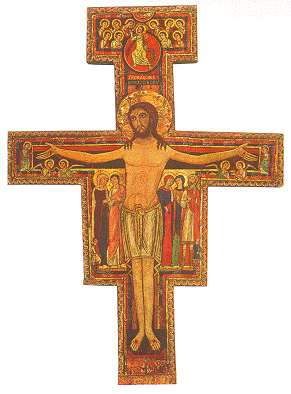1181/82: Nasce em Assis. Batizado com o nome de Giovanni di Pietro (pai) di Bernardone (avô). Mudado para Francisco.
1202: Guerra entre Perúsia e Assis. Assis vencida em Collestrada. Francisco, com 20 anos, passa um ano preso em Perúsia. Resgatado pelo pai, devido à doença. Nesse tempo parece que a família de Clara está refugiada em Perúsia; ela com 8/9 anos de idade.
1204: Longa doença.
1204/05: Parte para a guerra da Apúlia, no sul. Volta após visão e mensagem de Espoleto. Começo da conversão gradual. Em junho de 1205 morre o guerreiro Gautier de Brienne, chefe das expedições no Sul.
1205: Mensagem do crucifixo de São Damião. Conflito com o pai.
1206: Janeiro-fevereiro: questão perante o bispo Dom Guido II.
Março-junho: em Gúbio, perto de Assis, cuida dos leprosos.
Provavelmente em julho: volta a Assis. Veste-se de eremita e começa a reparação da capela de São Damião.
1208: Trabalha na reparação de São Damião, São Pedro e Santa Maria dos Anjos ou Porciúncula.
1208: 24 de fevereiro: ouve o Evangelho da missa de São Matias, na Porciúncula, sobre a missão apostólica. Muda as vestes de eremita e passa a usar as de pregador ambulante, descalço. Início da pregação apostólica. Aqui propriamente começa o estilo de vida franciscana, apostólica, de presença.
16 de abril: recebe em sua companhia os irmãos Bernardo de Quintavalle e Pedro Cattani. No dia 23, recebe o irmão Egídio na Porciúncula.
Março-junho: a primeira missão. Francisco e Egídio vão à marca de Ancona no litoral adriático. Recebe mais três companheiros, inclusive Filipe (Longo).
Em setembro e março: segunda missão. Os sete vão a Poggiosbustone no vale de Rieti. Depois de ter-se certificado do perdão dos pecados e do futuro crescimento da Ordem, Francisco envia os seis, e mais um que lhes agregara, para a terceira missão, dois a dois. Bernardo e Egídio vão à Florença.
1209: Os oito voltam à Porciúncula. Ajuntam-se-lhes outros quatro.
Março-junho: Francisco escreve breve Regra e vai a Roma com os onze. Obtém a aprovação do Papa Inocêncio III, só oralmente. Seria esta a primeira Regra, perdida. Na volta passam por Orte e se estabelecem em Rivotorto perto de Assis, num rancho abandonado.
1209 ou 1210: Os frades mudam-se para a Porciúncula, depois que um camponês toma o rancho para estábulo de seu burro.
Possível começo da Ordem Terceira Secular. A Porciúncula era dos beneditinos cluniacenses que a emprestaram a Francisco. Torna-se o berço da nova Ordem.
1211: Junho-setembro: Francisco vai à Damácia e retorna.
1212: Março: na noite do domingo de Ramos, a nobre jovem Clara di Favarone foge de casa e é recebida na Porciúncula. Talvez em maio fica alguns dias no mosteiro de São Paulo e algumas semanas no mosteiro beneditino de Panzo (perto de Assis) e por fim recolhe-se a São Damião, onde fica até a sua morte, em 1253. Segue-a a irmã Inês, 16 dias depois.
1213 ou 1214/15: Francisco pretende ir em missão a Marrocos, entre os muçulmanos, mas chega apenas à Espanha, onde adoece gravemente, retornando logo à Itália. Tomás de Celano "agradece a Deus esta doença", porque com a volta de Francisco, é recebido na Ordem.
1216: Junho-setembro: Francisco obtém do sucessor de Inocëncio III, o Papa Honório III, em Perúsia, a indulgência da Porciúncula.
1217: 5 de maio: capítulo geral de Pentecostes na Porciúncula. Primeira missão para além dos Alpes e ultramarina. Instituição de províncias. Frei Egídio vai para Túnis. Frei Elias para a Síria. Francisco pretende viajar para a França, mas o Cardeal Hugolino, legado papal na Toscana, encontra-o em Florença e o convence a permanecer na Itália.
1219: 26 de maio: capítulo geral de Pentecostes. Grandes missões no exterior: Alemanha, Hungria, Espanha, Marrocos, França. Em junho, Francisco vai de navio de Ancona para o Oriente, a exemplo dos outros.
Os que vão à França, interrogados se são albigenses, respondem afirmativamente, não sabendo que albigenses são denominados os hereges cátaros (puros) do Sul da França. O bispo de Paris e lentes da Universidade, examinando a sua Regra, constatam que a mesma é católica e evangélica. Dirigem-se, porém, ao Papa, pedindo informações. Este declara-os católicos e com Regra aprovada pela Santa Sé.
Para a Alemanha viajam cerca de 60. Do alemão conhecem apenas a palavra "Ya" (Ja) - sim. Perguntados se querem comida ou hospedagem, respondem: "Ya". Perguntados se são hereges lombardos (pobres da Lombardia = Valdenses) e se vêm espalhar seus erros, também respondem: "Ya".
Presos, surrados, despidos, ridicularizados, sofrem como cães. Vendo que não podem produzir frutos na Alemanha, voltam para a Itália. Começam daí por diante a julgar tão cruel a Alemanha que só pelo desejo do martírio voltariam outra vez para lá.
Na Hungria também os missionários sofrem os maiores vexames. Quando vão pelos campos, os pastores atiçam os cães contra eles e dão-lhes cacetadas. Pensando que querem sua roupa, dão-lhes as túnicas exteriores. Depois as vestes internas... Acabam voltando para a Itália.
Os que vão para Marrocos, são martirizados e depois canonizados como os promártires franciscanos (Beraldo, Pedro, Acúrsio, Adjuto, Otão: 1220). Movido por esse fato, Santo Antônio, então cônego regular de Coimbra com o nome de Fernando, pede ingresso na Ordem Franciscana.
1219: Setembro-dezembro: Francisco vai ao acampamento do Sultão do Egito, Melek-el-Kamel (1218-38), e tem "entrevista" com ele. A 5 de novembro, o exército dos cruzados toma Damieta, perto de Alexandria, no Egito. Francisco tem pouco resultado junto ao Sultão. Escreve o cronista que, ao chegar, é maltratado. Ignorando a língua dos turcos, apenas diz: "Soldan, Soldan". Então é levado à sua presença e depois reconduzido por homens amados para junto dos exércitos que cercam Damieta.
1220: Francisco viaja para São João D´Acre (Accon), onde há uma fortaleza dos cruzados, e vai à Terra Santa. Na sua ausência, Francisco deixa dois "vigários", que, porém, começam a introduzir novidades na Ordem, instituindo novos dias de jejum e abstinência, além dos já marcados. Um frade, encarregado das clarissas, pede privilégios ao Papa em favor delas, contra a vontade do santo, que prefere "vencer pela humildade mais que pelo poder da lei". Outro, subtraindo-se à Ordem, pretende fundar uma nova Ordem, para leprosos de ambos os sexos.
1220: Março-setembro: alarmado pelas notícias que um frade leva ao Oriente, retorna à Itália, desembarcando em Veneza. Nessa ocasião, o Cardeal Hugolino é nomeado protetor da Ordem.
1220: Francisco entrega o governo da Ordem a Frei Pedro Cattani, como seu vigário.
1221: Março: morre Frei Pedro Cattani.
Maio: capítulo geral de Pentecostes. Frei Elias de Cortona é eleito vigário em substituição ao falecido. Francisco apresenta a segunda Regra (não bulada ou não aprovada por bula papal), que Frei Cesário de Espira, versado em Sagrada Escritura, adornou com muitos textos bíblicos.
Aprovada a Regra da Ordem Terceira Secular pelo papa Honório II.
1221/1222: Francisco faz uma viagem de pregação ao Sul da Itália.
1222: 15 de agosto: Festa de Assunção. Francisco prega em Bolonha (sede de estudos jurídicos). Suas palavras visam mais "extinguir inimizades e reformar os pactos de paz", conforme relata um ouvinte. "Muitas facções de nobres, entre os quais existia velha inimizade, com derramamento de sangue, foram levadas a pacificação".
1223: Fonte Colombo, Francisco redige a 3ª Regra, que é discutida no capítulo geral de junho. A discussão continua em Roma, e em outubro Francisco se dirige ao Papa para pedir a aprovação.
29 de novembro: Honório III aprova, com bula papal, a Regra definitiva, ainda hoje em vigor. O texto original conserva-se como relíquia no Sacro Convento de Assis. Provavelmente houve colaboração dos frades e do representante da Santa Sé.
24/25 de dezembro: na noite de Natal, Francisco celebra a festa em Greccio, junto a um presépio.
1224: 2 de junho: segue uma missão de frades para a Inglaterra. Bem sucedida.
Em fim de julho ou início de agosto, o vigário da Ordem, Frei Elias é advertido (sonho, ou visão?), que Francisco terá ainda dois anos de vida.
15 de agosto a 29 de setembro: Francisco, com Frei Leão e Frei Rufino, passa no Alverne, preparando-se com uma quaresma de oração e jejum para a festa de São Miguel Arcanjo.
Em setembro, tem a visão do Serafim alado e recebe os estigmas.
Em outubro ou início de novembro, Francisco retorna à Porciúncula, via Borgo Santo Sepulcro, Monte Casele e Cidade de Castello.
1224: ou 1225, dezembro-fevereiro: cavalgando um jumento, Francisco faz um giro de pregações pela Úmbria e Marcas (Ancona).
1225: Março: visita Clara em São Damião. Suas vistas pioram muito, então. Ele pretende ficar ali numa cela, ou na casa do capelão, mas, cedendo aos pedidos do vigário da Ordem, Frei Elias, consente em receber tratamento médico: a estação é muito fria, e o tratamento é transferido.
Abril ou maio: ainda em São Damião, Francisco recebe tratamento, mas não melhora. Recebe a promessa da vida eterna. Depois de uma noite dolorosa, atormentado pela dor e por ratos, compõe o Cântico do Irmão Sol. Junto a Santa Clara.
Junho: acrescenta uma estrofe ao Cântico do Irmão Sol, comemorando a reconciliação entre o bispo e o podestá de Assis.
Inícios de julho: acolhido em Rieti pelo Cardeal Hugolino e pela corte papal para submeter-se ao tratamento dos médicos da corte pontifícia. Vai a Fonte Colombo para tratamento, sob insistência do Cardeal Hugolino, mas o difere, devido à ausência do Frei Elias.
Julho ou agosto: em Fonte Colombo, o médico cauteriza as têmporas de Francisco, mas com pouco resultado.
Setembro: Francisco vai a S. Fabiano, perto de Rieti (Floresta), para ser tratado por outro médico, que opera sua vista. Restaura então a vinha do pobre p[adre, danificada por visitantes de Francisco.
1226: Francisco vive ora em Rieti, ora em Fonte Colombo.
Abril: vai a Sena para outro tratamento.
Maio ou junho: volta à Porciúncula, via Cortona.
Julho-agosto: no calor do verão é levado para Bagnara, nas colinas perto de Nocera.
Fim de agosto ou início de setembro: piorando de saúde, é levado, via Nottiano, para o palácio do bispo de Assis. D. Guido acha-se ausente, em peregrinação ao Santuário de São Miguel, cuja festa se celebra no dia 29, no monte Gargano.
Sentindo iminente a morte, pede para ser levado para a Porciúncula. Chegado à planície, lança sua bênção sobre Assis. Nos últimos dias de vida, dita o Testamento, autotestemunho de incalculável valor para a vida e os propósitos de homem tão singular.
Com a proximidade da morte, pede que o deitem nu no chão. Depois aceita emprestado o hábito que o guardião lhe dá. Faz ler o Evangelho da Última Ceia e abençoa os filhos seus, presentes e futuros.
1226: 3 de outubro, à tarde: Francisco cantando "mortem suscepit" (morreu cantando). No domingo seguinte, 4 de outubro, é sepultado na igreja de São Jorge, na cidade de Assis, mas o cortejo fúnebre passa antes pelo mosteiro de São Damião, para a despedida de Clara.
1228: 16 de julho: Francisco é canonizado. Relíquias trasladadas para a nova basílica, em construção, em 25 de maio de 1230.









 During the week of October 13, the Diocese of California engaged in convention activities, concluding with the business meeting on Saturday, October 18. Convention week opened with regional events on Monday and Wednesday evening, led by the Rt. Rev. Marc Handley Andrus, bishop of California, the Rt. Rev. Steven Charleston, assistant bishop of California, and the Rt. Rev. Naudal Alves Gomes, the bishop of Curitiba, Brazil, companion diocese to the Diocese of California. On Friday, a Eucharist service was held at Grace Cathedral in San Francisco, followed by a dance party on the cathedral’s plaza. On Saturday, over 400 clergy and lay delegates gathered at Grace Cathedral in San Francisco for Morning Prayer and an address by Andrus. The participants then moved downstairs to Gresham Hall where they voted on committee members, changes to the constitution and canons, and a total of seven resolutions. (Information about voting results is available at
During the week of October 13, the Diocese of California engaged in convention activities, concluding with the business meeting on Saturday, October 18. Convention week opened with regional events on Monday and Wednesday evening, led by the Rt. Rev. Marc Handley Andrus, bishop of California, the Rt. Rev. Steven Charleston, assistant bishop of California, and the Rt. Rev. Naudal Alves Gomes, the bishop of Curitiba, Brazil, companion diocese to the Diocese of California. On Friday, a Eucharist service was held at Grace Cathedral in San Francisco, followed by a dance party on the cathedral’s plaza. On Saturday, over 400 clergy and lay delegates gathered at Grace Cathedral in San Francisco for Morning Prayer and an address by Andrus. The participants then moved downstairs to Gresham Hall where they voted on committee members, changes to the constitution and canons, and a total of seven resolutions. (Information about voting results is available at 





















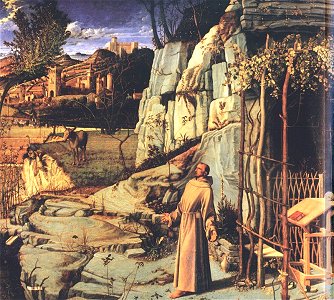
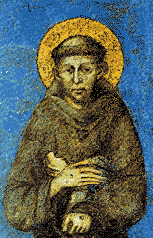
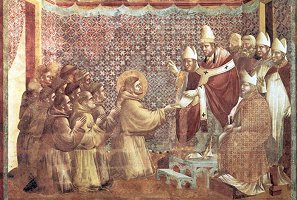

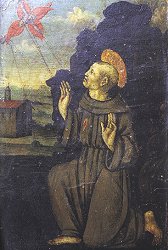
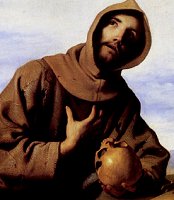 Why remember Francis? He was a powerful, authentic Bible preacher in an era when this was rare. His message of love and gratitude goes beyond all Christian sectarianism, so that his "Song of Brother Sun" was chosen at one major interfaith gathering as the single song that everyone present -- Christian and non-Christian -- could sing together.
Why remember Francis? He was a powerful, authentic Bible preacher in an era when this was rare. His message of love and gratitude goes beyond all Christian sectarianism, so that his "Song of Brother Sun" was chosen at one major interfaith gathering as the single song that everyone present -- Christian and non-Christian -- could sing together. 